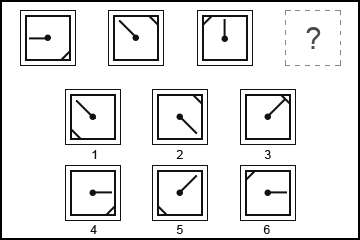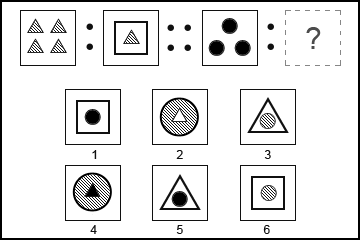Abstract Reasoning Test

Abstract reasoning tests measure the capacity or ability to solve logical problems, assessing general intelligence, and more specifically, the ability of abstraction, which is the basis of all intelligent thinking process. It is a culturally-fair (the level of education is not decisive for implementation) and non-verbal test (applies to anyone regardless of language, education and verbal ability).
The abstract reasoning tests we propose, have 3 sections, one consisting of series of 3 figures, to determine the fourth one, another one formed by two pairs of figures that share an analogy which must be determined, and a last one formed by series of 4 figures to determine the fifth one. Each of the 12 questionnaires have 48 questions, ordered by increasing difficulty, distributed as follows:
- 28 of the first type (series of 3 figures).
- 12 of the second type (analogy between pair of figures).
- 8 of the last type (series of 4 figures).
The completion of each series or analogy is made by multiple choice between a set of six possible responses.
The series of figures evaluate the ability of reasoning and logical analysis, which must be used to derive the basic principles present in some figures that have a logical order. Logical patterns hidden in each of the series, may involve individual or collective transformation of the different elements that make up each figure, and that is evidenced as a progression, moving, rotating, resizing or coloring, etc. The reasoning used to solve a problem may depend, in many cases, on the options presented.
An example of a series of figures is as follows:

Each figure in the series is composed of three elements, a square, a watch hand and a diagonal line in one of the corners of the square. The square don't change along the series, while the hand rotates 45 degrees clockwise (moving from the center of the left side of the square to the left top corner, then to the center of the top side of the square, etc.), and the diagonal line moves from one corner to another counter clockwise. Following this reasoning, the next figure should be the indicated with option 5.
An example of analogy between figures is as follows, where the two black points between the two first figures means 'IS TO' and the four points 'AS '. Once you have identified the analogy between the two first figures, you will be able to select which of the six options presented, is analogous to the third figure.

In this case the solution is the figure indicated with option 5. Notice that the second figure of the series, is made up from a square which encloses one of 4 equal elements composing the first figure. The fact that it is a square, is not deliberately, the logic lies in the amount of elements in the first figure, which is equal to the number of sides of the selected geometric shape (square). Thus, as we have three black circles in the third figure, the fourth figure should be a triangle enclosing a black circle.
If you wish, in the training mode you can see the solution by clicking on the button located on the top right of each question. Sometimes further information about the logic used is provided.
Questionnaires cannot be selected, they will come out continuously and periodically whenever you request a test.
